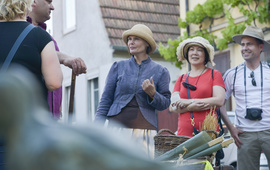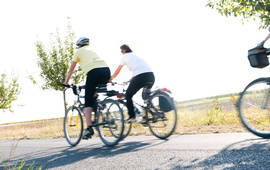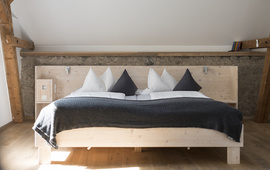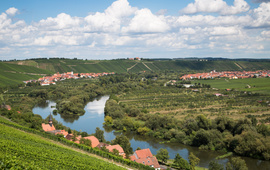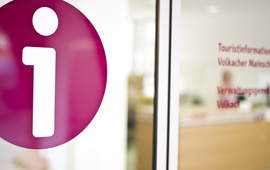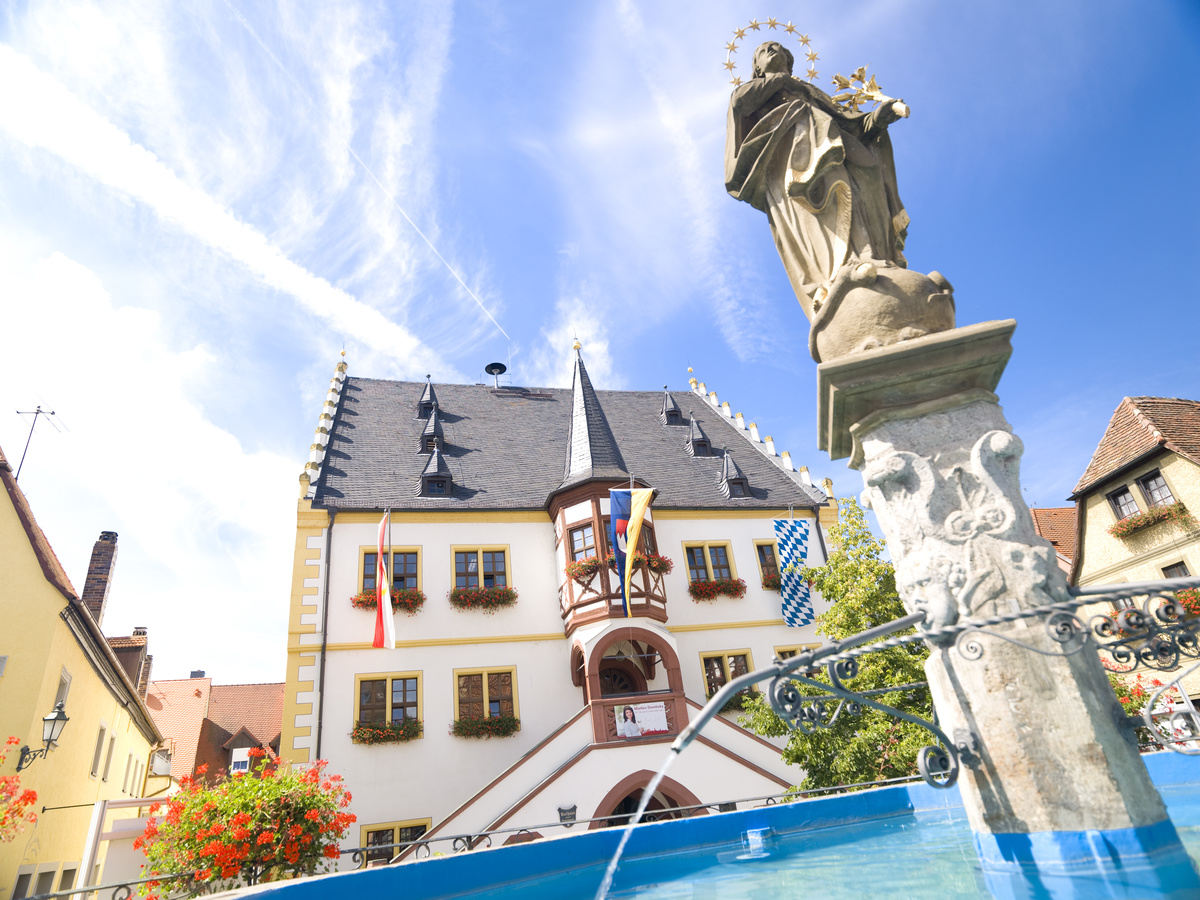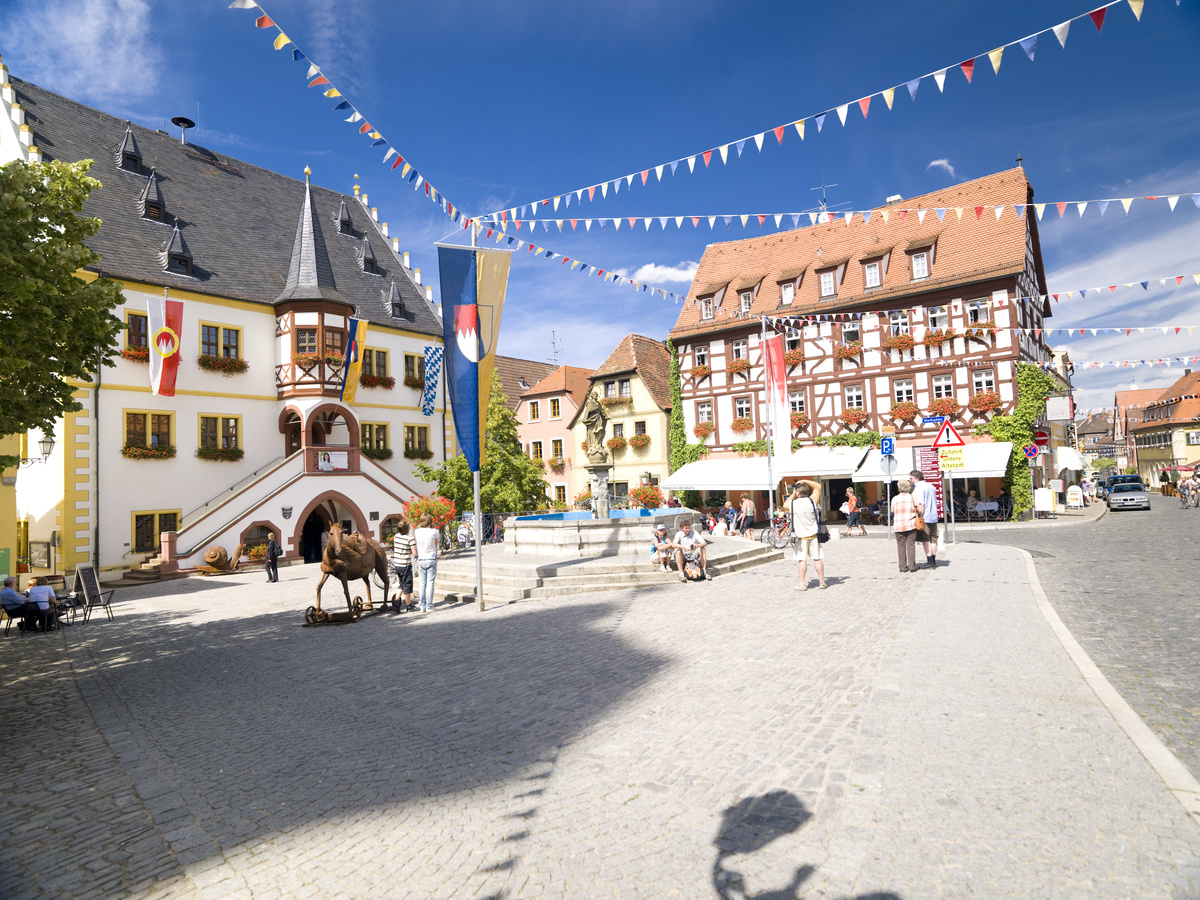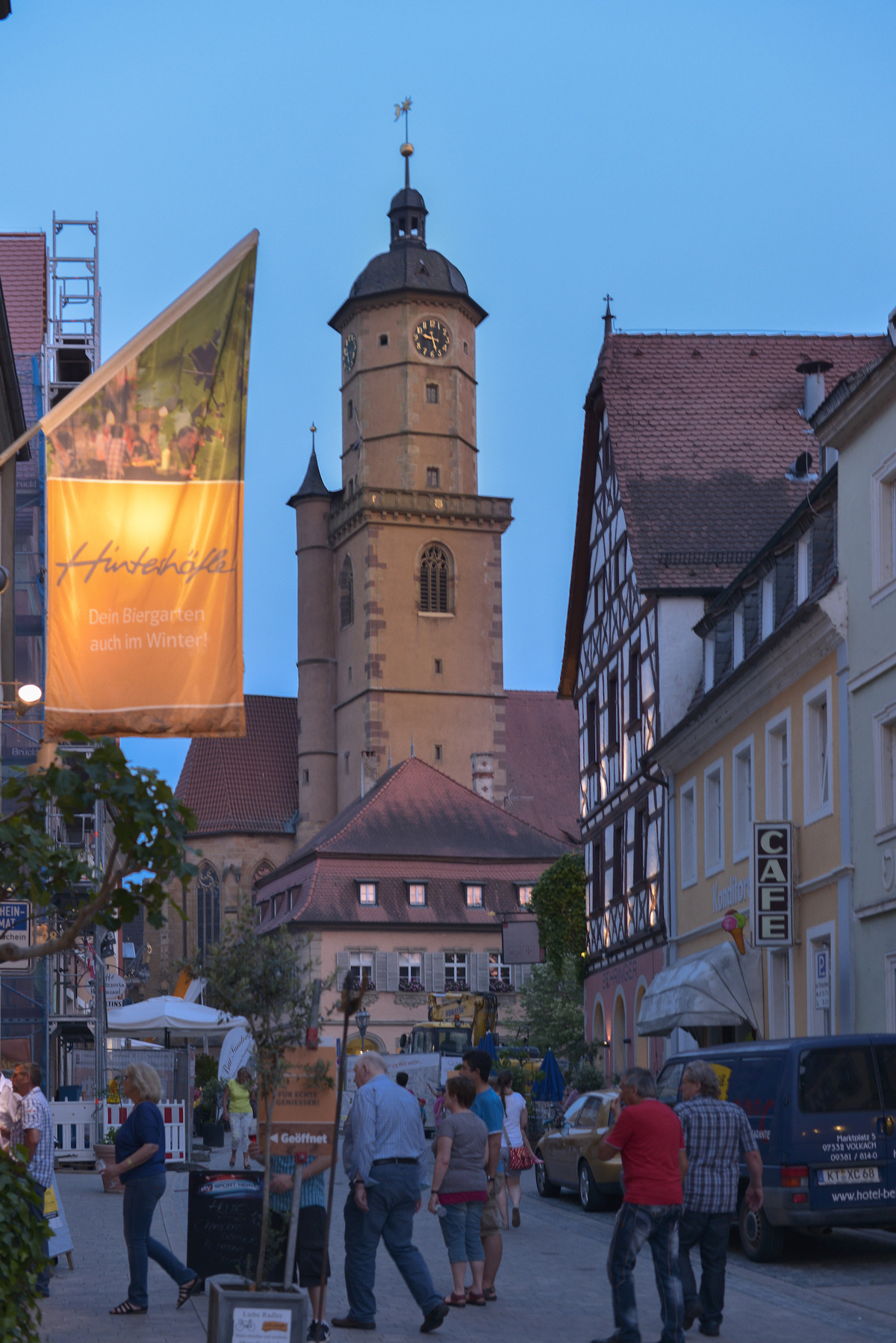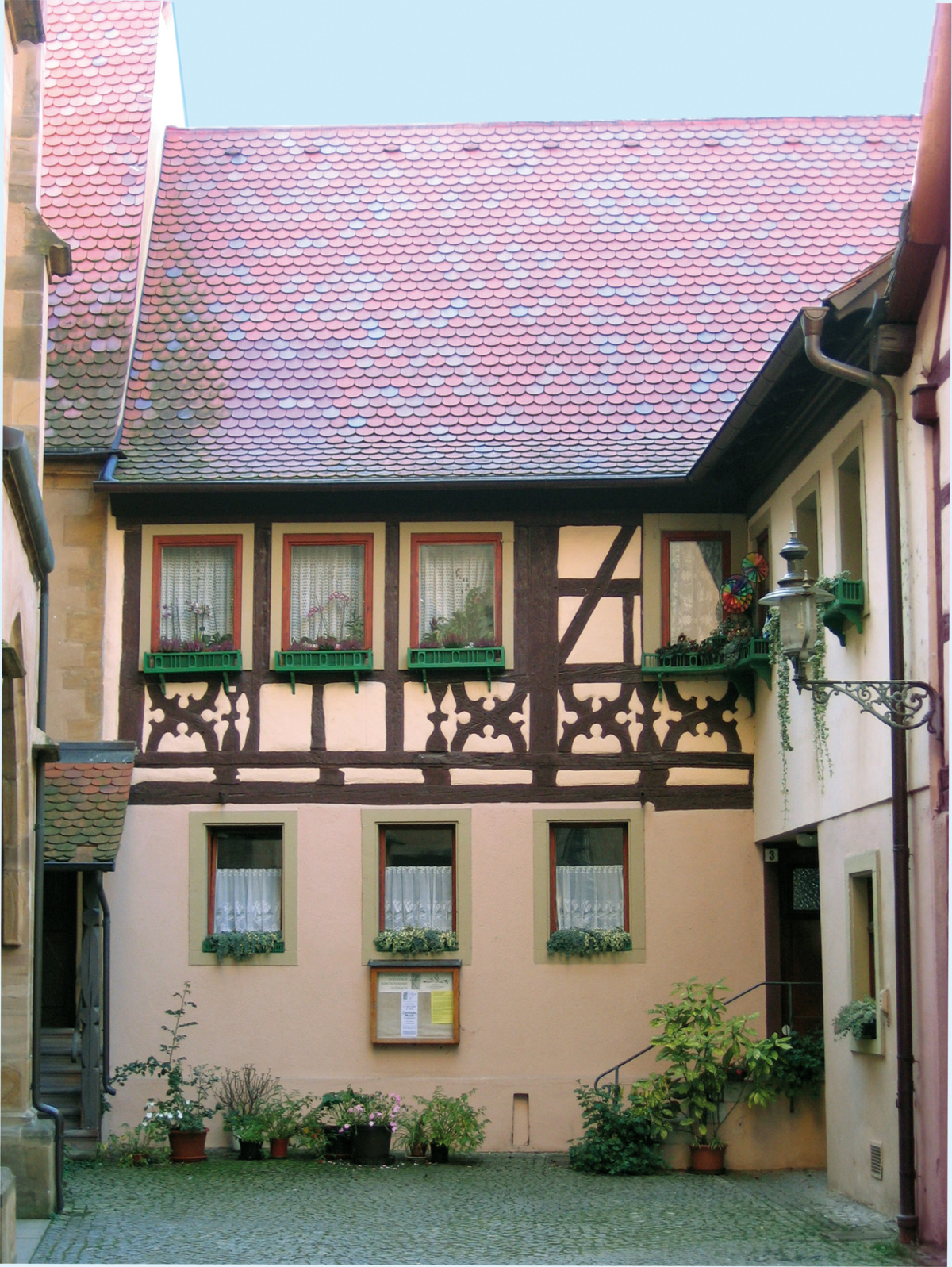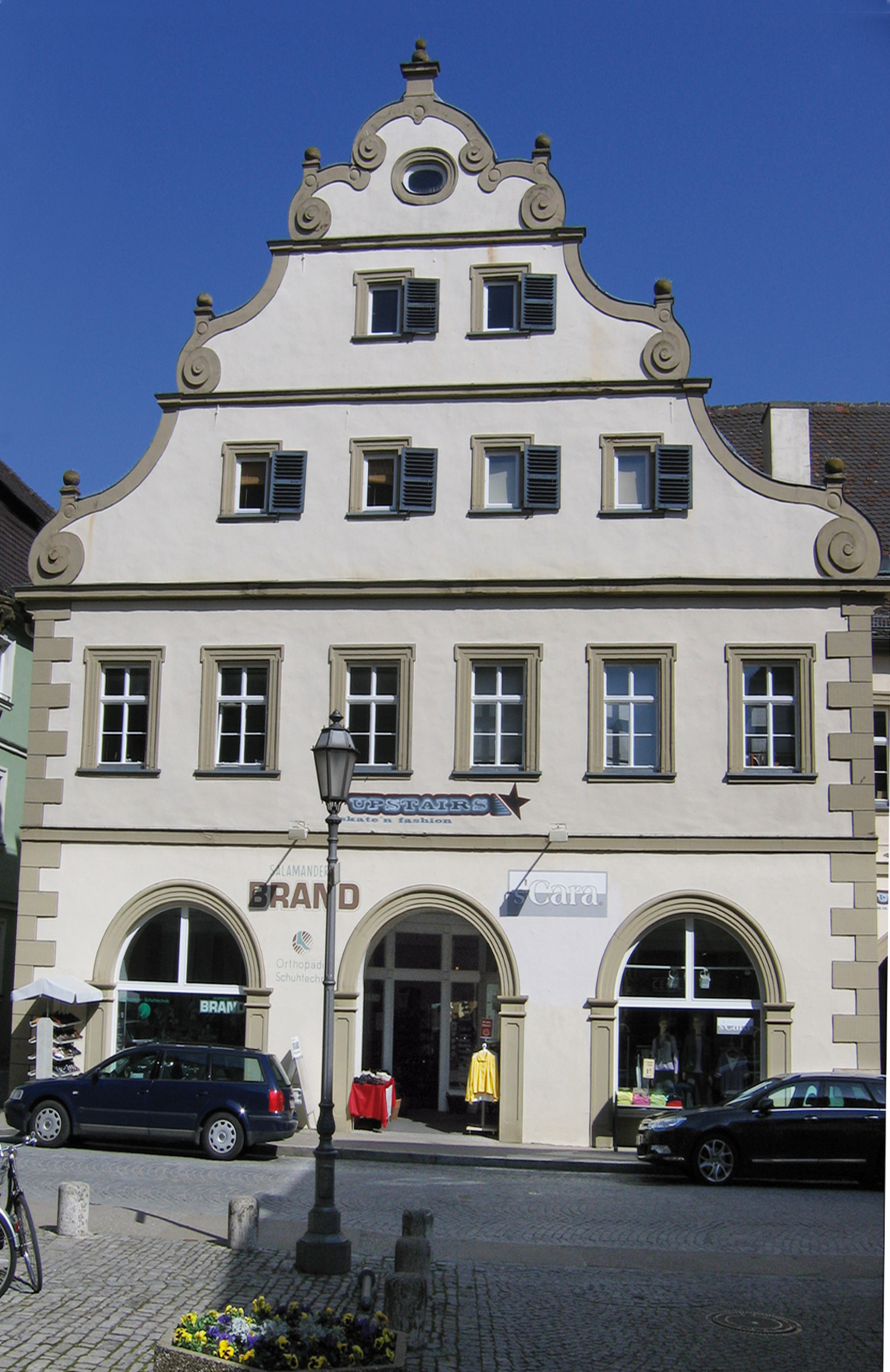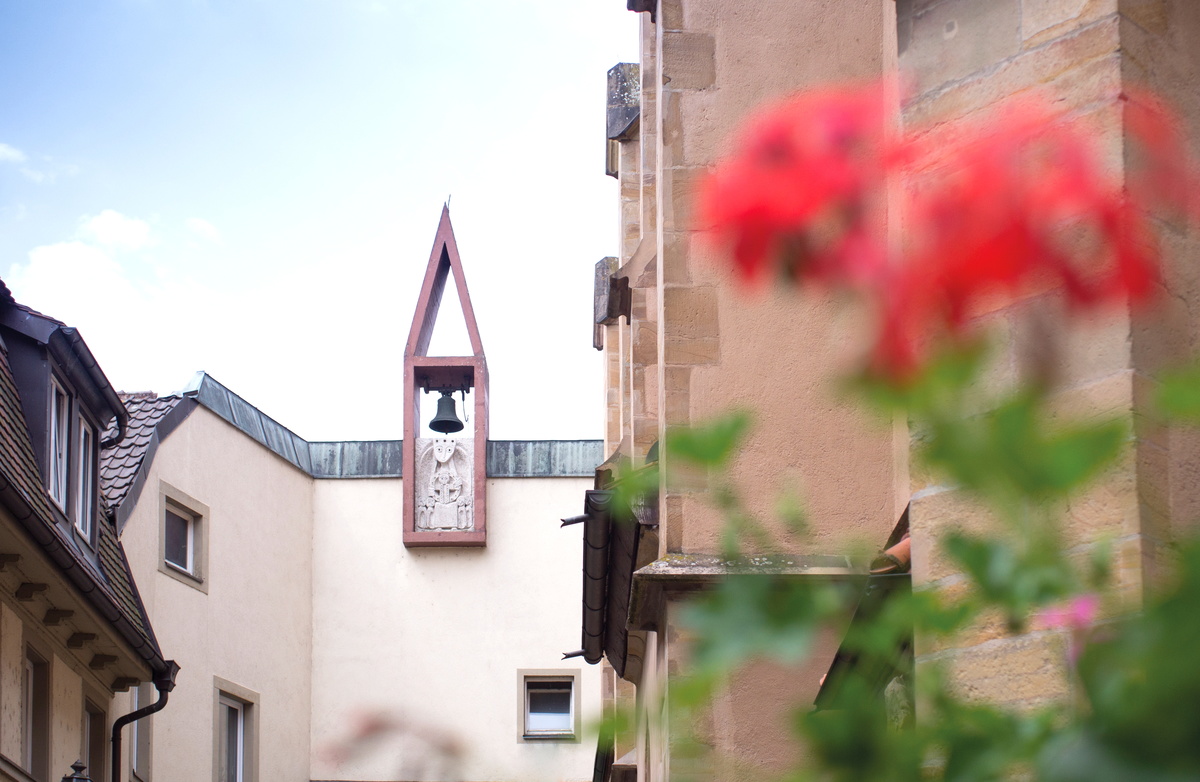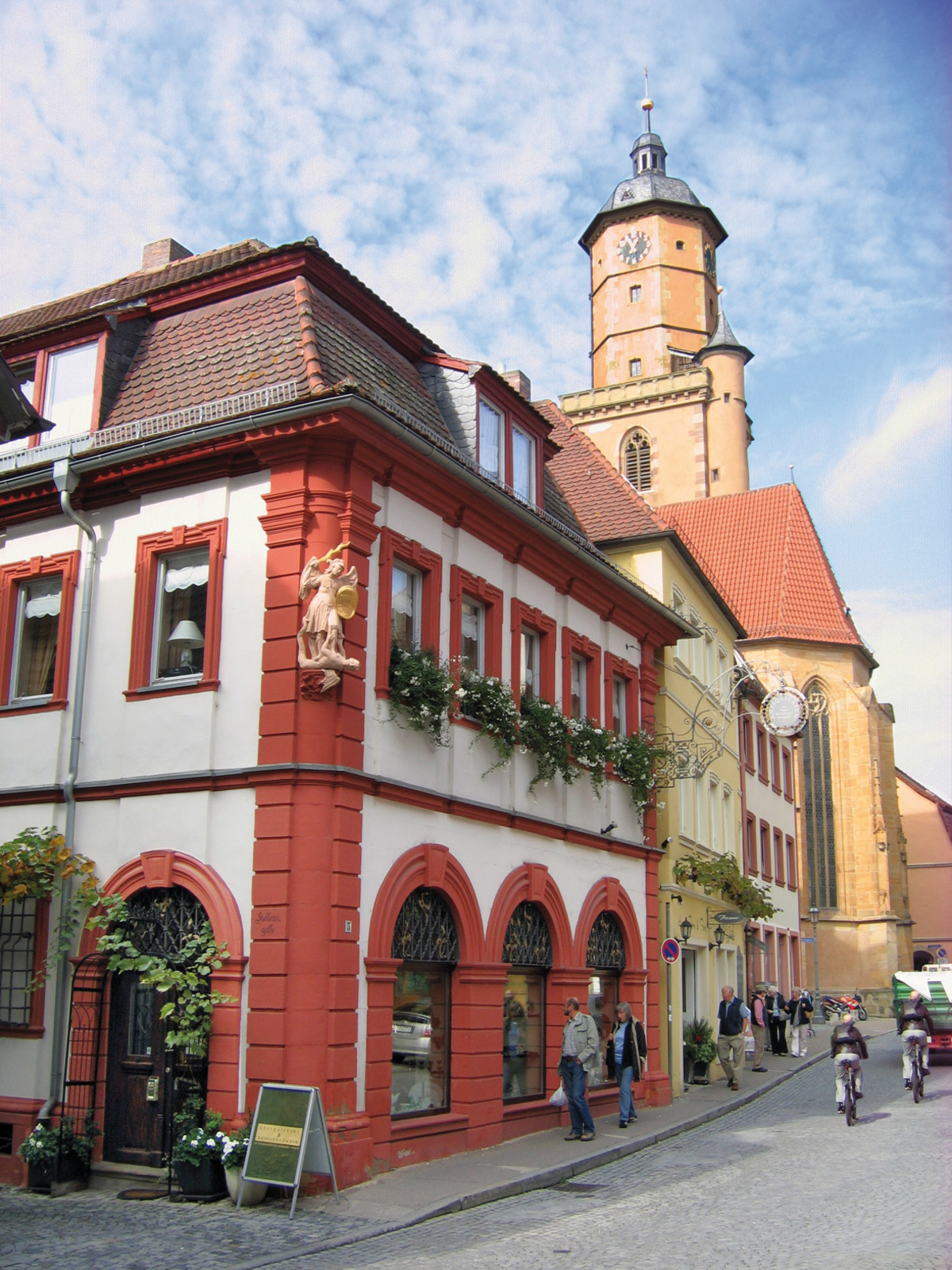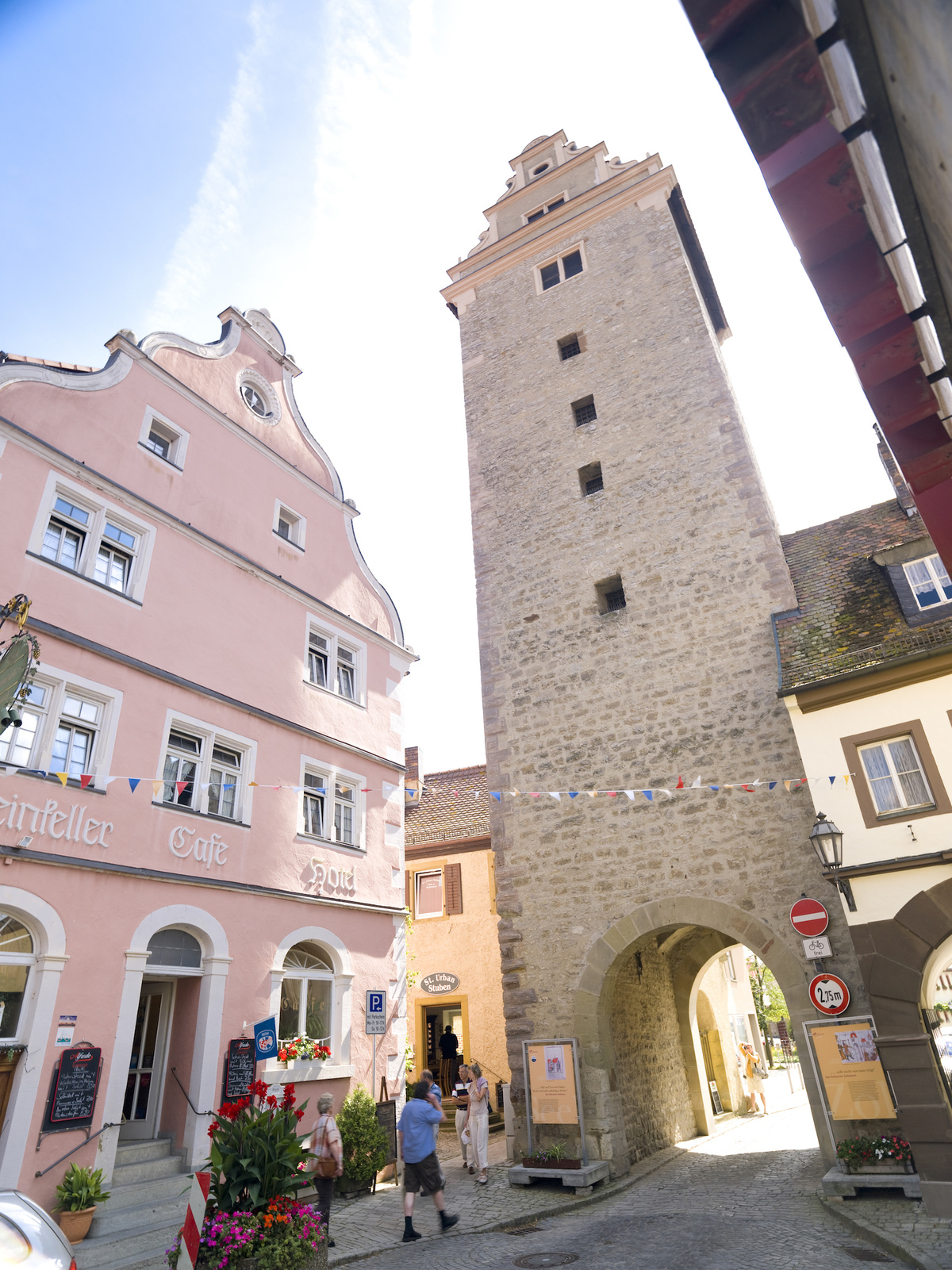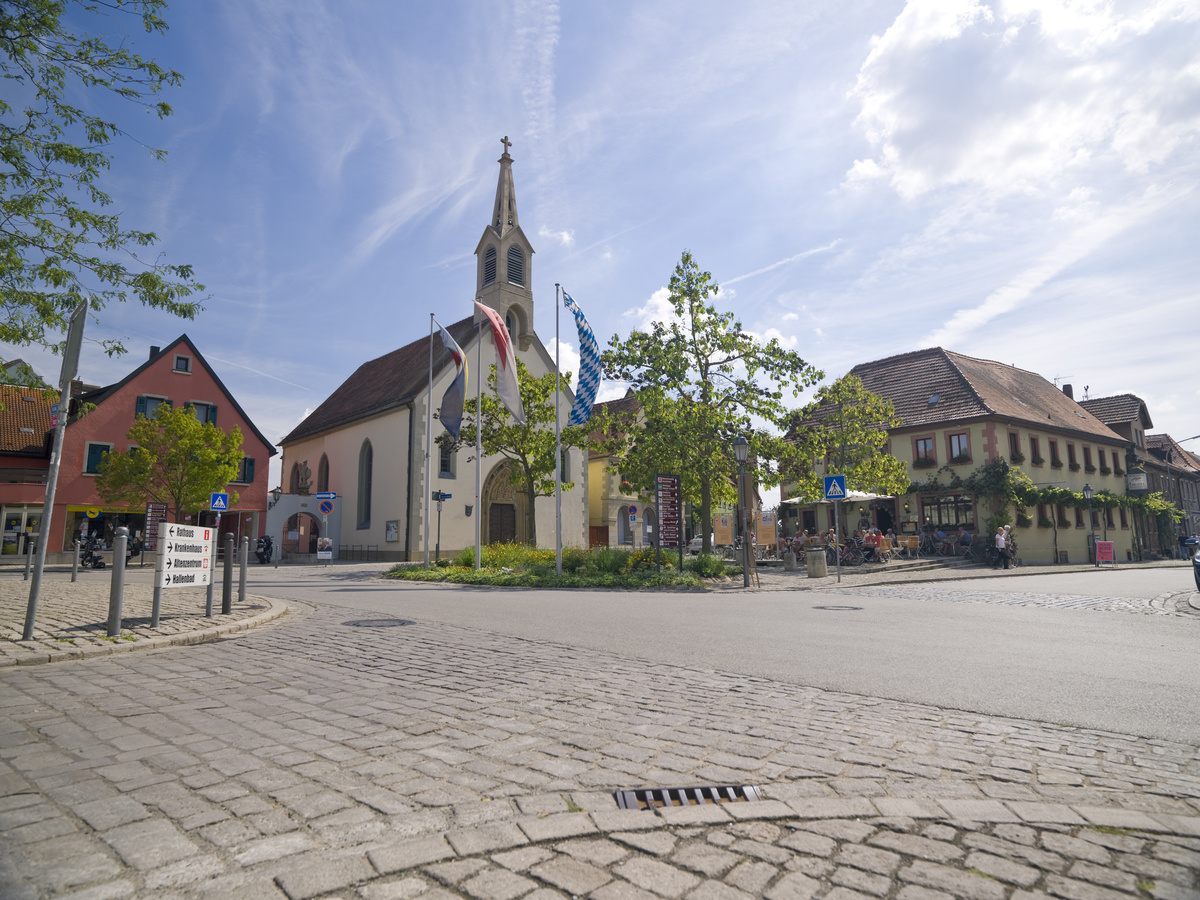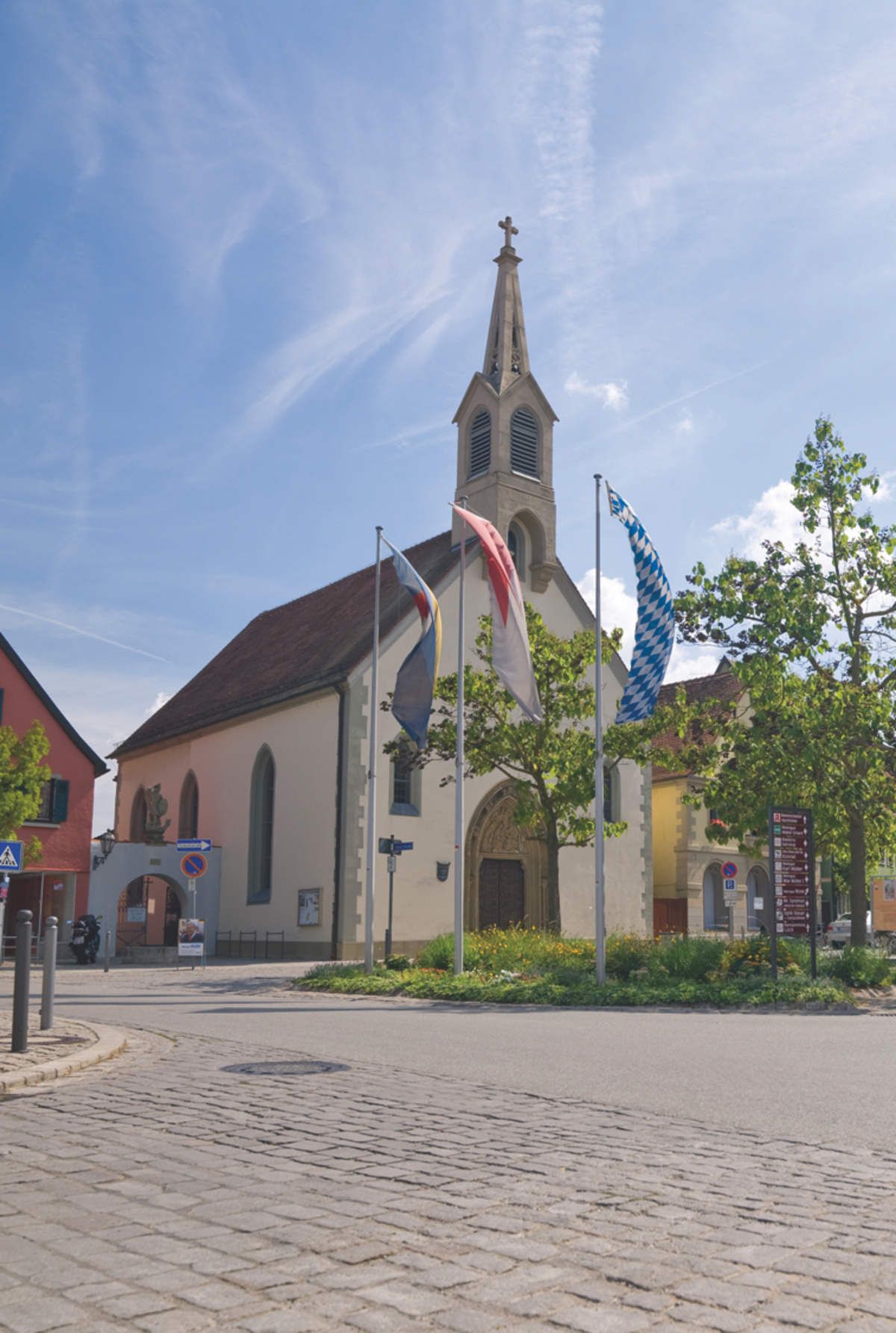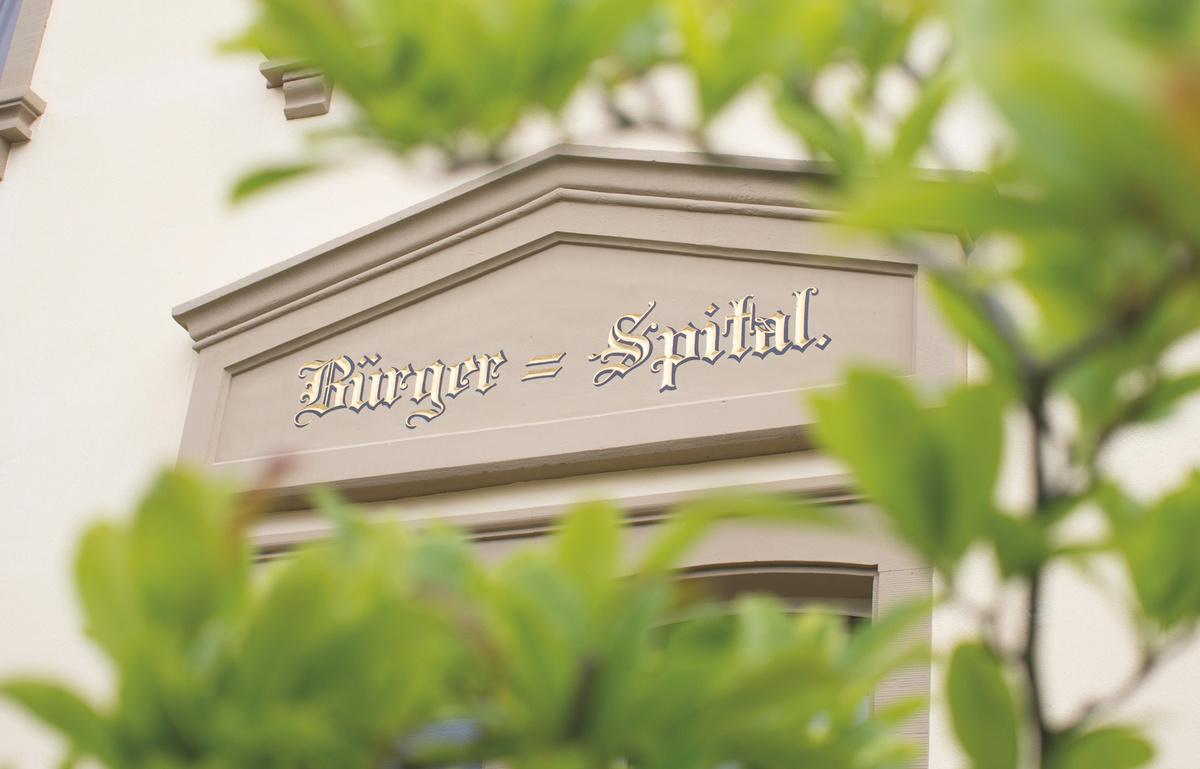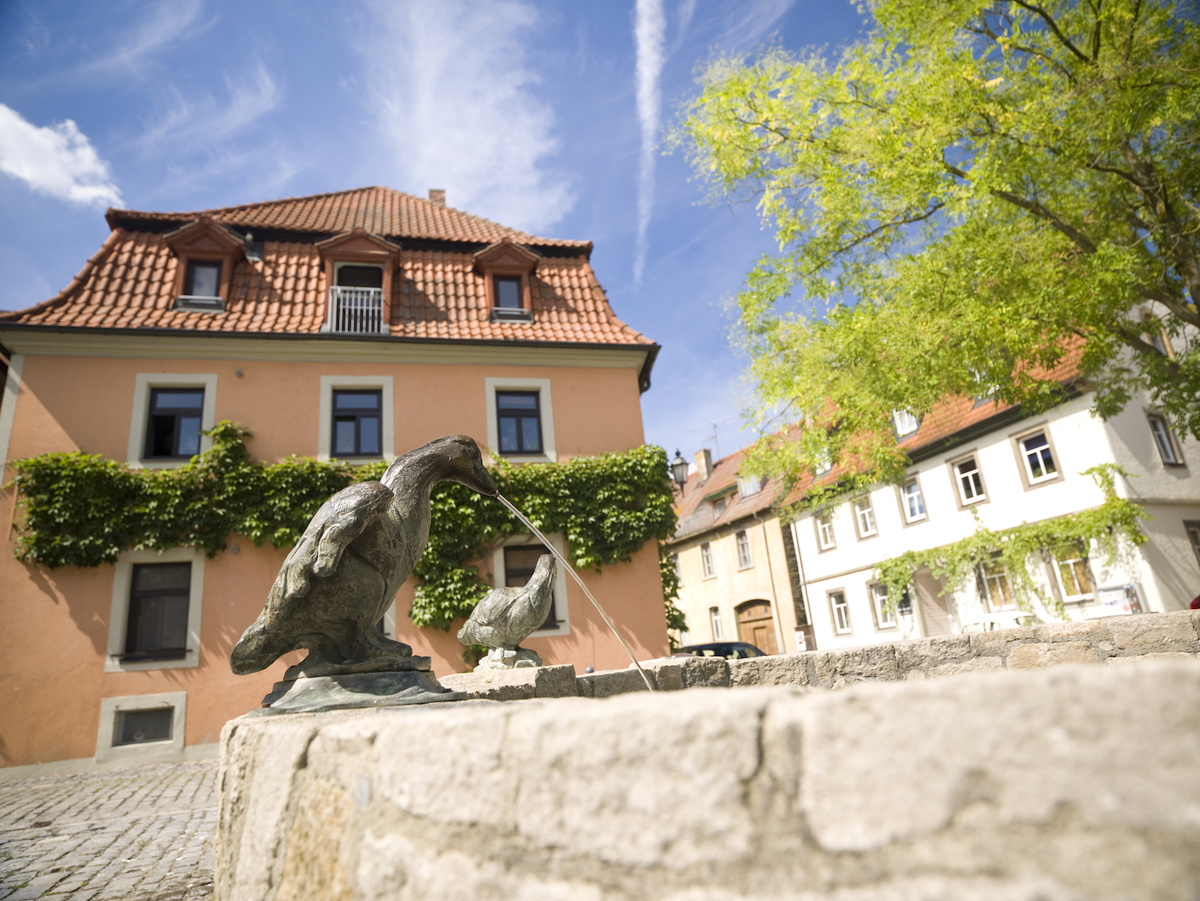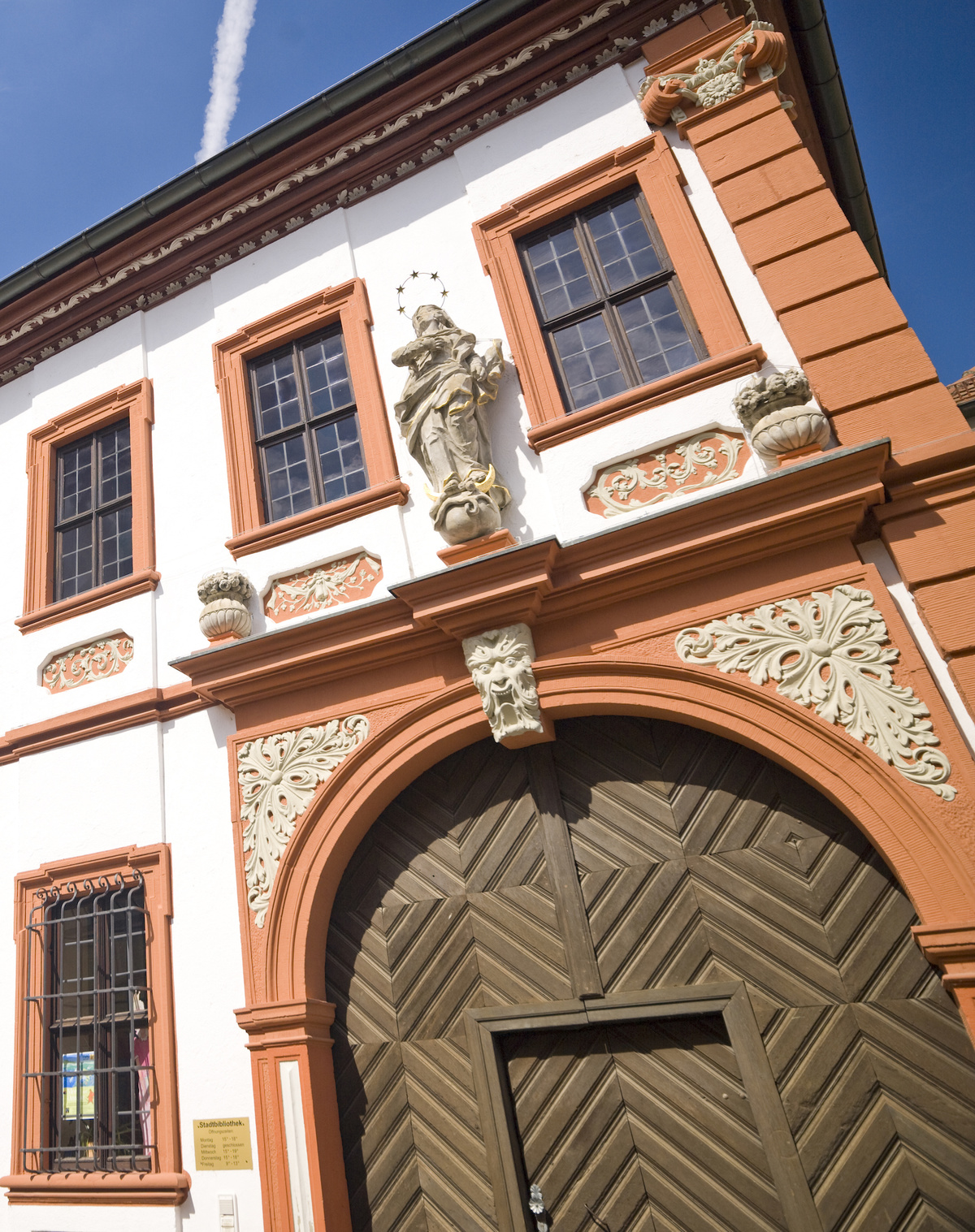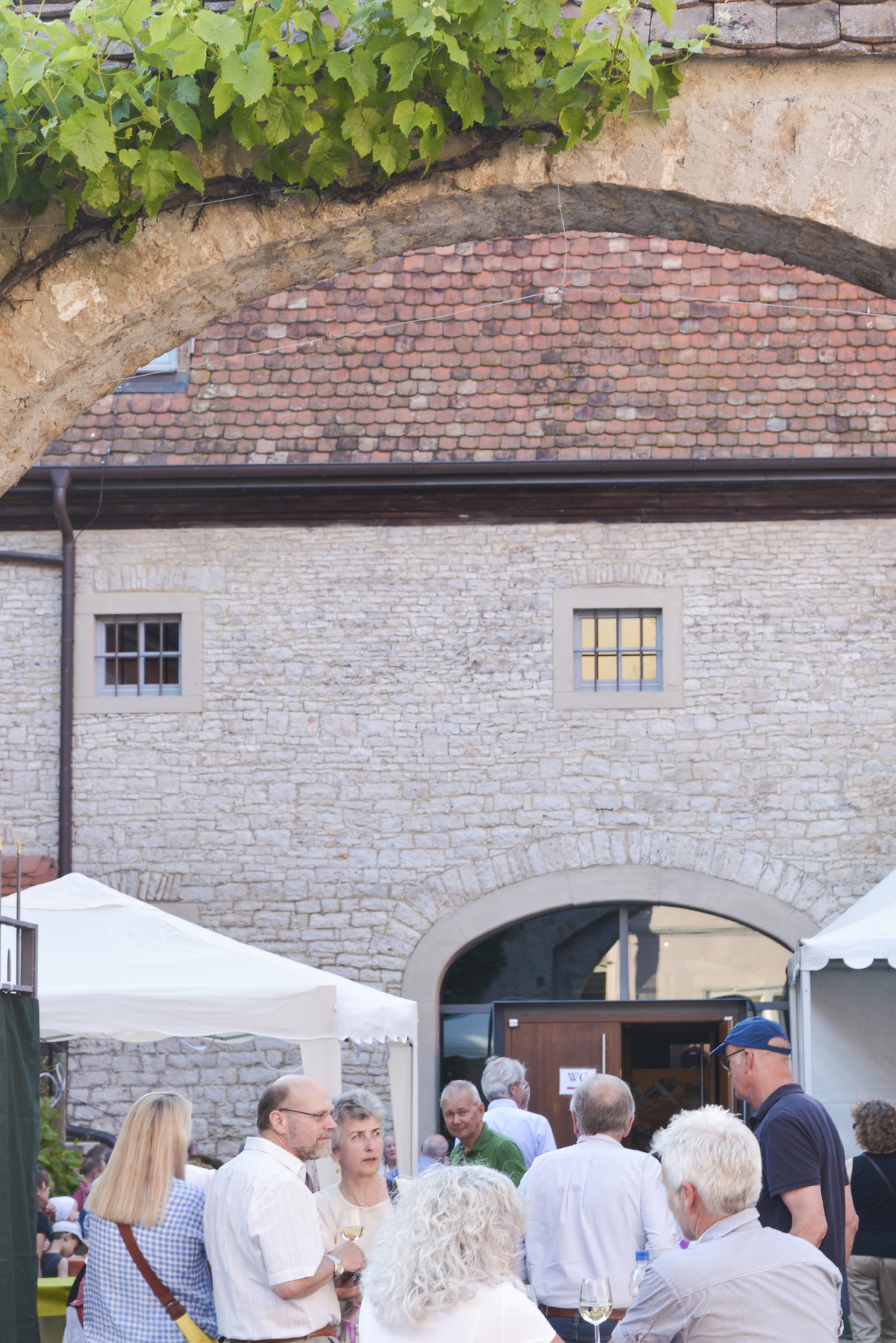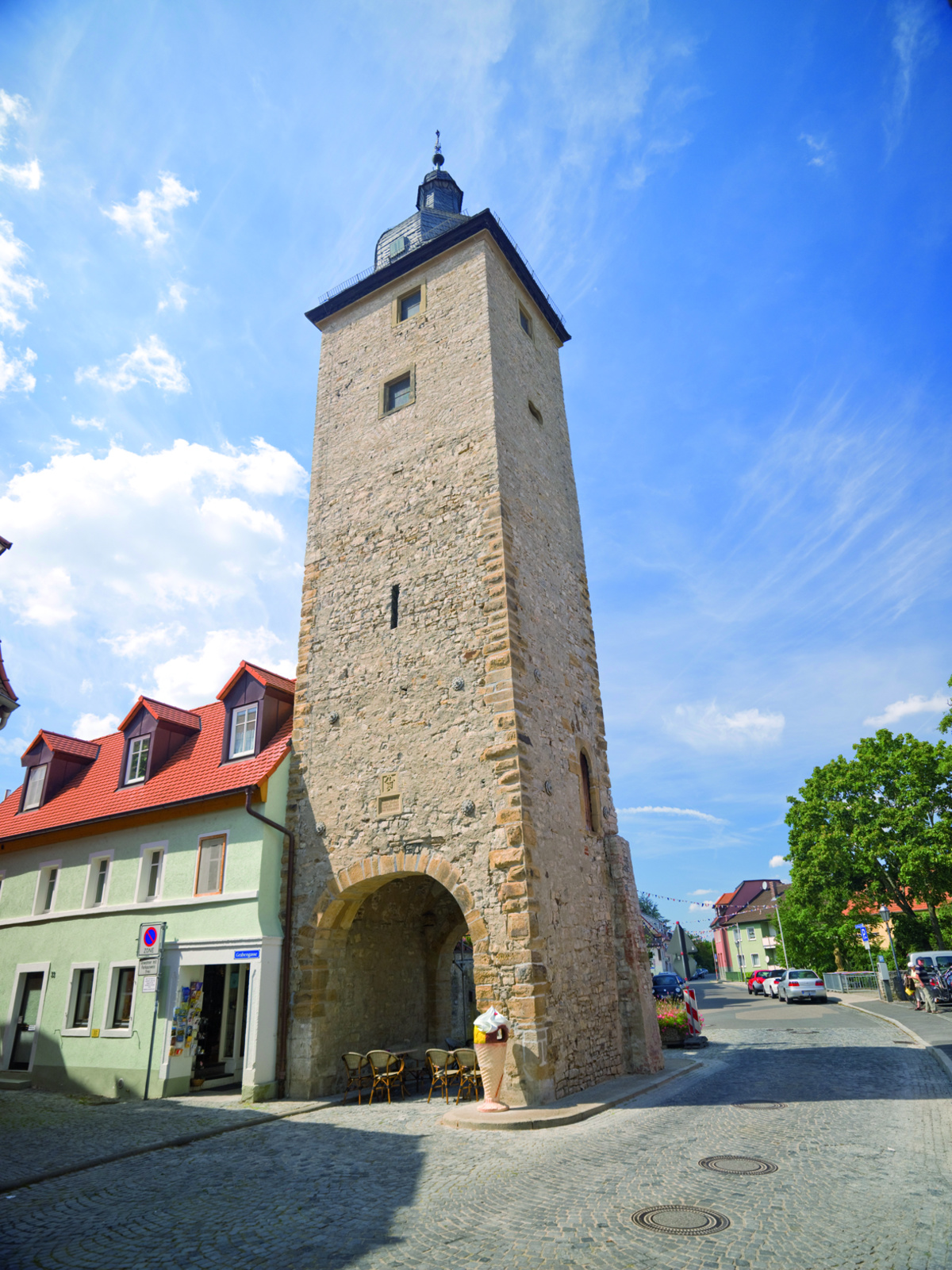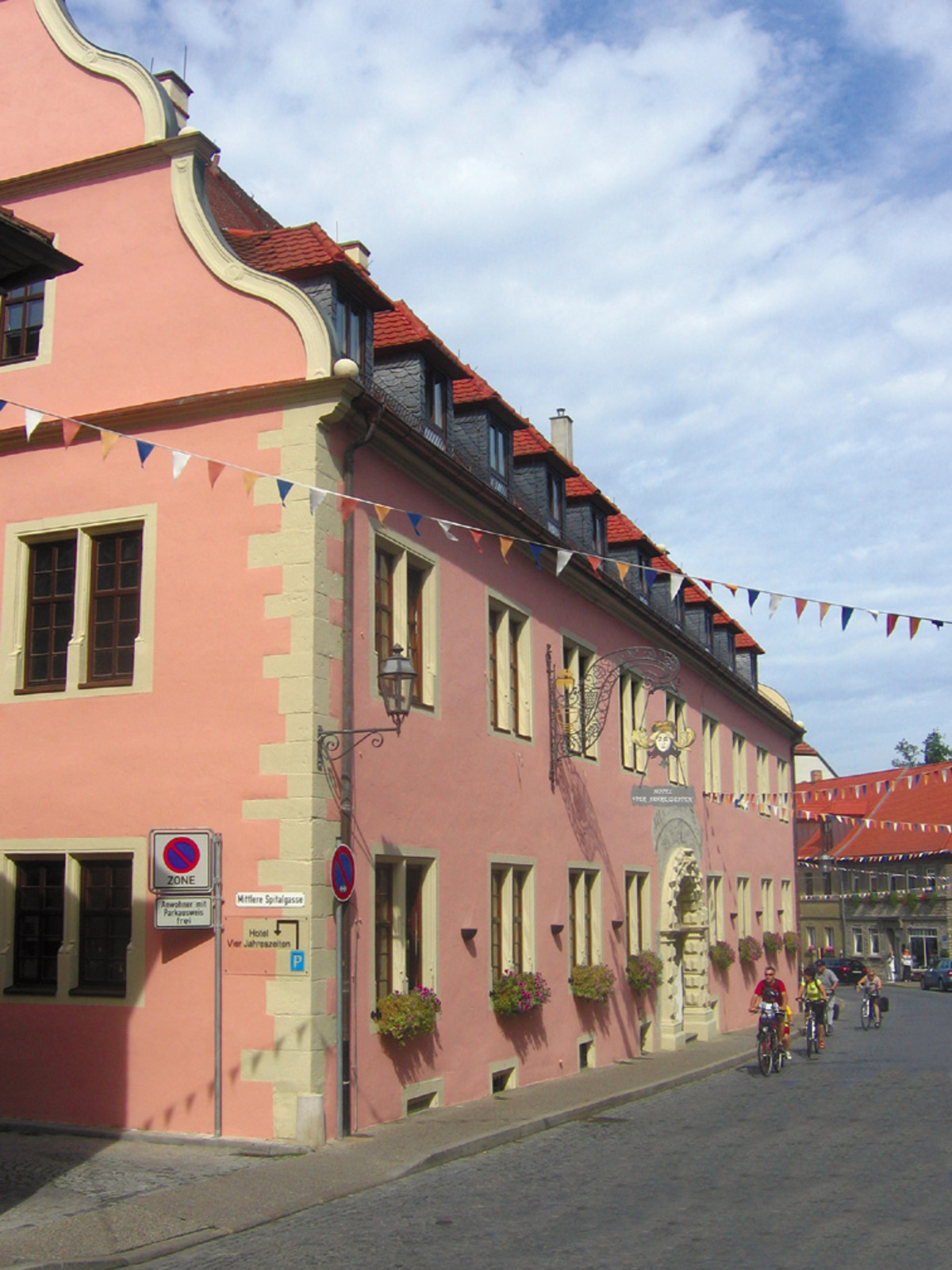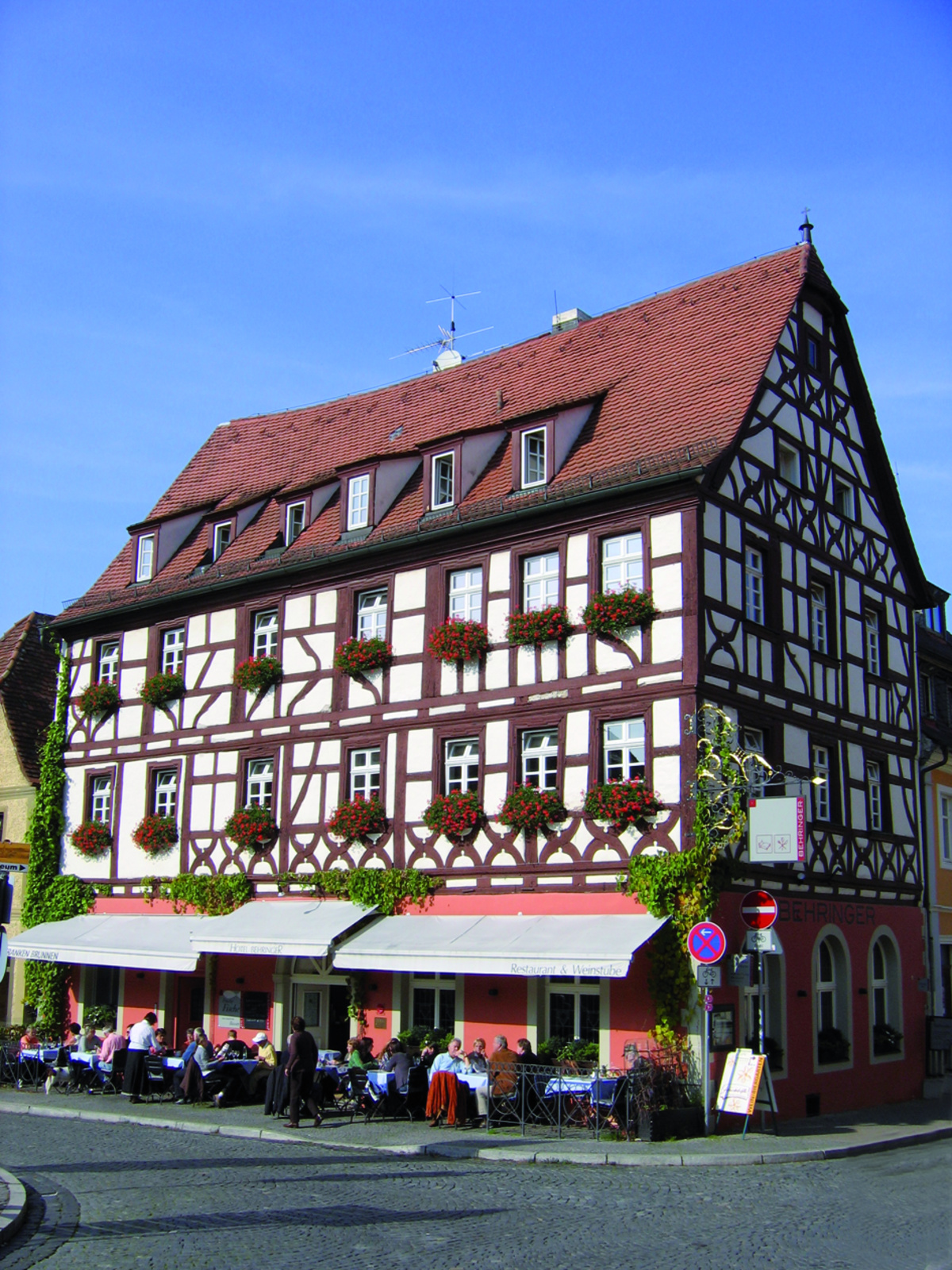
-
 The Main River Loop
The Main River Loop
-
 Volkach Town Tour
Volkach Town Tour
The Main River Loop
Volkach Town Tour: Please click on a sight in order to learn more.
1. Townhall
Facts & figures
The townhall was constructed in 1544.
Special feature
- Half-timbered external staircase and proclamation balcony
- Interior
- Ground floor: Former market hall with a wide gated entrance
- First floor: This is where the citizenry used to hold their celebrations (today a plenary hall and administrative offices)
- Second floor: Administrative offices of the town treasury then and now
Time travel
At first there was a different townhall located elsewhere in the town. The house itself, however, fell to ruin, and required a new construction at the current location. The townhall was used as an administrative building for the senate ad its meetings, and as the local court. It furthermore served as a trading location. Starting in the 19th century, the building was used as a school. After 1972, the structure was refurbished and became a state-of-the-art administrative seat for the town.
Tour options
Ground floor: Tourist Information Volkacher Mainschleife, Marktplatz 1, 97332 Volkach, Phone: +49 (0) 9381-401 12
2. Market square / Market fountain
Facts & figures
- The fountain was constructed in 1480 and renewed around 1720.
- The fountain figure depicts "Maria Immaculata", the immaculate virgin.
- In 1982, the market square was reassigned as a pedestrian area.
Time travel
The market square was used for farmers' markets in the olden days. Today, it is reserved mainly for cultural events.
3. St. Bartholomew Parish Church (catholic)
Facts & figures
- In 1413, constructions of a new church to replace the older St. George Chapel began.
- Construction continued on into the 18th century.
- The church steeple is 54m high.
Interior
- On the western side: St. Nicholas Chapel (1463)
- Baroque altars (Johann Peter Wagner, Georg Anton Urlaub) and Rococo stucco from the 18th century
- High altar: A group of figures representing the Holy Trinity with a painting below "Aufnahme Mariens in den Himmel" (Mary's Assumption, Sebastian Urlaub, 1733) and (left to right) the figures of St. Bartholomew, St. Kilian, St. Aquilinus and St. George
- Side altar on the left: Painting "Jesus am Ölberg" (Jesus on the Mount of Olives, Peter Geist, 19th century)
- Side altar on the right: Painting "Anbetung der Heiligen Drei Könige" (The Adoration of the Magi, Peter Geist, 1853)
- Altar on the north wall: Painting "Maria Rosenkranzkönigin" (Mary Queen of the Rosary, G. A. Urlaub), next to it a church bell dating back to 1313
- Altar on the south wall: Painting "Hl. Cäcilia" (St. Cecilia, G. A. Urlaub, 1755)
- Alcove in the south wall: Late Gothic "Pieta", stone casting, approx. 1430
- Ceiling fresco (Johann Michael Wolcker, 1753)
Oval central image: "Die Verherrlichung des hl. Altarsakraments" (Glorification of the Holy Altar Sacrament)
The surrounding six image medallions depict scenes from the Old Testament - Church organ: 25 registers (Klais, Bonn, 1949) with Baroque prospectus
Exterior design
- Scene of the Mount of Olives, 1581 (northern choir wall)
- Late Baroque sandstone crucifix (eastern side of the choir arch)
- Sepulchral monument of the Balbus family from the former cemetery
at the house across from the southern choir wall
Time travel
The pilgrimage church "Maria im Weingarten" was the very first parish church for the villages along the Main River loop. The construction of the church spanned several centuries. The last great refurbishment of the structure took place between 2006 and 2008.
Tour options
Open daily between 8 am and 6 pm (5 pm in winter)
4. Old School of Latin (Kirchgasse)
Facts & figures
- Double-storey, half-timbered building next to St. Nicholas Chapel
- Dating back to some time in the 16th century
Time travel
The old School of Latin was the workplace for the teacher, town chronicler and notary Niklas Brobst (15th/16th century). The school was reserved or boys only, and offered three classes until the middle of the 19th century. Today, the building is the home of the Küster family.
6. Franciscan Convent (Klostergasse)
Facts & figures
- Initially part of the Castell town castle, then seat of the manorial administrative offices until 1848
- The Franciscan nuns of Dillingen settled here in 1858
- Between 1869 and 1942, the convent operated a boarding school for young ladies
- After 1945, the school was reopened as a middle school for girls
- Today, the middle school for girls offers six years of education, a daycare facility and day nursery
7. "Alte Würzburger Amtskellerei" (Hauptstrasse 5)
8. Upper Gate
Facts & figures
- Constructed in the 13th century
- Addition of the coat of arms over the arch in 1597 under orders from Prince-Bishop Julius Echter von Mespelbrunn
- Locally known as "Sommerach Gate" and "Tower of Thieves"
Time travel
Once the location of the town jail, which gave it the name "Diebenturm" (tower of thieves). Some of the jail cells from the 13th century still remain. The tower is not currently used. The two-storey ward was demolished in 1871, and a new gate house was constructed next to the tower in 1911 following a fire. The pedestrianised alley on the left of the gateway in direction of the town centre was added in the 1950ies.
9. Upper Market
Facts & figures
- Way station and trading location for the farming population of the surrounding region since the early days (also known as "Saumarkt" or "Pig Market"), and local trading place for wine merchants and barrel makers.
- The square was refurbished as part of the old town renovation project (1993-1999)
- Inn "Gasthaus Rose": Birth Place of the Franconian costume painter Peter Geist
On the square in front of the gate: A modern interpretation of Volkach's municipal coat of arms with the Franconian Rake (shell limestone) and the river (cast bronze), plus the outlines of former suburbs of the town etched into the cobblestone.
Time travel
Seven shell limestone plinths with bronze reliefs depicting the history of Volkach by the local-born sculptor Norbert Kleinlein were erected on the square as part of the refurbishment project:
| 906: | Royal seal of the Franconian King Ludwig, who presented Volkach with the Fulda Monastery |
| 1258: | Coat of arms of the Earls of Castell, which were the first to pronounce Volkach a town. |
| 1406: | Awarded with the "Right to Hold Market" |
| 1520: | Final transition of the town into the holdings of the prince-bishopry of Würzburg. |
| 1814: | Integration into the Kingdom of Bavaria. Depiction of the Constitutional Column in Gaibach in honour of the Bavarian constitution. |
| 1892: | Start of "modernity" with the construction of the first Main River bridge and connection to the railway network in 1909. |
| 1972: | Municipal incorporation of ten villages |
10. Church of St. Michael (protestant)
Facts & figures
- Constructed in 1420 by the Earls of Castell as "St. Maria vor den Mauern" (St. Mary Outside-the-Walls) with entrance portal "Krönung Mariens" (Coronation of the Virgin)
- Used as a cemetery chapel since 1544
- 1739 new patron: St. Michael
- Reconstruction in Neo-Gothic style in 1865 following its destruction in a large-scale fire
Time travel
Volkach was catholic. Protestants had to travel to neighbouring communities for worshipping. An own protestant church community did not exist in Volkach until the 20th century.
Tour options
The vestibule is open daily between 8 am and 6 pm (5 pm in winter).
11. Bürgerspital (Retirement Home) (Spitalstrasse 25)
Facts & figures
Constructed in 1879 with funding from the Carl and Anna Friderich Foundation as seat of the "Juliusspital" (had several locations in the town over time) for the care of the old and sick.
Time travel
During its history, the building was sometimes used as a hospital. Today, it houses a Caritas care home for the elderly.
12. Gänseplatz ("Goose Square")
Facts & figures
- The square was constructed after the great fire of 1804
- The location was refurbished in 1996, and a "Goose Fountain" (Gänsebrunnen) and public benches were added.
Time travel
Initially completely built up, the square was used as a place to water livestock after the great fire of 1804 – hence the name "Goose Square". Typical for the region are the "Häckerbürger" houses around the square, which are constructed from shell limestone.
13. "Schelfenhaus" (Schelfengasse 1)
Facts & figures
- Constructed by the merchant and councillor Johann Georg Adam Schelf between 1719 and 1729.
- The owner's coat of arms is displayed over the main entrance portal.
- Historical rooms on the first floor (Oven Room, Picture Room, White Room, and "Professor-Rösser" Room)
Time travel
The building was used as a private residence until the 1970ies. The town of Volkach purchased the house and remodelled the building to create a visitor centre between 1979 and 1992. The upper storey rooms have remained unchanged for representation purposes, while the German Academy for Children's and Youth Literature (Deutsche Akademie für Kinder- und Jugendliteratur) holds offices on the ground floor. The town library is located in the annex.
Tour options
Tours of the house are offered as part of town tours. Bookings: Tourist Information Volkacher Mainschleife, Marktplatz 1, 97332 Volkach, Phone: +49 (0)9381-401 12
14. "Barockscheune" – Local History Museum (Weinstrasse 7)
Facts & figures
- Constructed as a barn from small format shell limestone bricks in 1714.
- The mansard roof is its most outstanding feature.
The museum displays
- a scale model of the town
- Volkach's town chronicle ("Salbuch")
- interesting facts about wine growing
- a collection of "Bocksbeutel" bottles from 1710 to the present day
- a cooper's workshop
- various exhibitions over the course of the year in the foyer
HEADS-UP FOR KIDS!!
The museum offers a number of interactive stations. Those who can answer all the questions will be able to open the town chronicler's safe at the end!
Time travel
In the past, the barn was used as fire station and warehouse for municipal building materials. The Baroque structure was completely refurbished in 2003, and now serves as the town museum.
Tour options
From Easter to 1st November: Friday 2 pm – 5 pm, Saturdays, Sundays, and public holidays 11 am – 5 pm.
Free entrance on each first Sunday of the month, plus free tours at 4 pm
Book you guided tour:
Tourist Information Volkacher Mainschleife
Marktplatz 1
97332 Volkach
Phone +49 (0)9381-401 12
15. Lower Gate
Facts & figures
- Constructed in the 13th century
- Extended in the 16th century
- On the left side of the gate arch (out-of-town direction), high water marks dating back over the centuries can be seen
- Popularly known as "Gaibach Gate" or "Krakenturm" ("Kraken Tower")
Time travel
The lower suburb near the Volkach stream was once a fishing village.
16. Echterhof (Hauptstraße 31)
Facts & figures
- Constructed by Valentin Echter von Mespelbrunn in 1605 as an administrative building of the prince-bishopry
- Renaissance structure featuring the Echter coat of arms over the round arch portal
- Previously owned by the Juliusspital, privately owned today
Time travel
The building was used as district and regional court between 1848 and 1967. A refurbishment in the 1960ies transformed the structure into a hotel.
Tour options
Please contact the hotel leaseholder for a tour date and time!
17. Town houses around the market square
Inn "Gasthaus Behringer"
- The building was originally a dye-house and later a candlemaker workshop.
- A refurbishment in 1892 transformed the building into an inn.
- The structure features extensive half-timbering.
"Haupt House"
- Two-storey, late Baroque-style construction (1698)
- Named after the initial owner Kasper Haupt
- Restored around 1950
- Currently used as a commercial and residential building
Corner building towards Spitalstrasse
- Distinctive roof shape with stepped gables
- Historically documented since 1574
- Completely refurbished in 1965
- Currently used as a commercial and residential building

